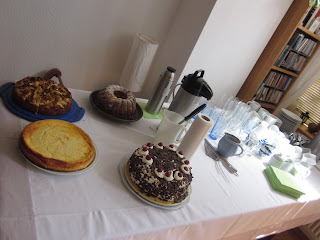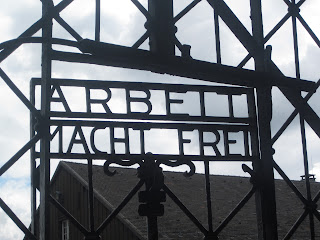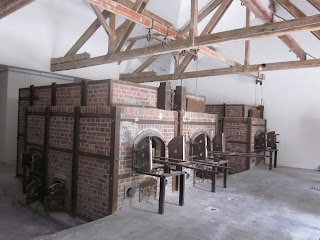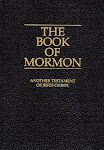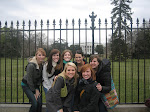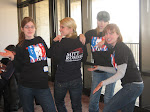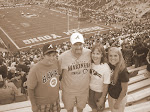Half of the group squished in a tiny cell.
Torture chamber's
This would drip a drop of water on a prisoners head every minute for hours and hours, until finally the prisoner would break and admit to whatever charges they were charging him for.
This would be filled up with about 6 inches of water. There was no chair. They just had to stand and when they could no longer stand, they sat or laid themselves in the water. However, since there was no restroom, they would have to use the restroom in the water, which they had to stay sitting/laying in. So humiliating. Those people had no sense of human dignity.
Often prisoners were transferred from one prison to another. Even when they were just traveling across the street, they would transport them in this van which had no windows. They would drive them all around the city to make them loose all sense of direction.
This was a room much like our tour guide was put in. Solitary confinement for months. I can't imagine.
Our beloved tour guide. He didn't tell us his personal experience until the very end. It certainly was mind blowing.
This is what I wrote in my Germany Journal when we left the prison:
The coolest thing just happened. I was asked to give a portion of my gift to the man who was incarcerated at the Stazi prison. When I stood up, I said I lived in Salt Lake City, Utah (we had to bring gifts to give to tour guides representative of our home town). He cut in and told me he had been there! I laughed (after all, what are the odds?) and said, "Well you know all about this!" I told him that today is Pioneer Day, a big holiday in Utah which celebrates when the Mormon pioneers made it to the Salt Lake Valley. He interrupted grinning and said, "I am a Mormon!" In reality, I think he meant that he knew a Mormon, but that's not important. He was hosted by a LDS family in Lehi, Utah. I continued on told him that the civil liberties we enjoyed as American's were taken away from the pioneers as his were, though both were very different circumstances. He reached out excitedly to grab the picture of the temple from me. I asked if I could read something off the back. I didn't plan on doing this, but it seemed fitting at the time. I then read a quote on the back of the print of the Salt Lake City Temple by President Hinckley during his Stand a Little Taller talk. My voice cracked. I looked around the room and tears were streaming down everyones faces. It truly was an awesome experience that I will never forget.
Turkish Market
True story: Germans live in houses. Real, normal houses. I took pictures for my students. We're a little ethnocentric. They'll love it.
Checkpoint Charlie! Before I got there, I didn't even know this existed. It's a powerful and welcome sight to see as you walk down the streets of East/West Berlin!
Straddling where the Berlin Wall once stood.












